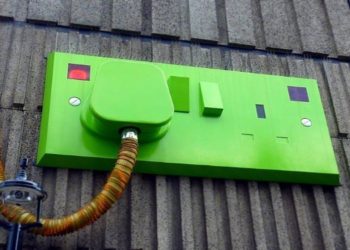In a world increasingly defined by the need for sustainable and environmentally friendly solutions, solar energy is becoming a focal point of interest. The inexhaustible power of the sun offers a promising alternative to fossil fuels that benefits not only our planet but also our wallets. Investing in solar technology is more than just an environmental contribution; it’s an investment in the future of our energy supply and independence.
The appeal of solar energy lies not just in its sustainability but also in its versatility. From private households to large corporations, anyone can benefit from installing solar panels. The energy generated by these panels can be used to light homes, heat water, and even power cars. The possibilities are nearly limitless, providing a clear path toward a greener and more sustainable future.
“Solar Energy: Not Just for Environmental Protection, but Also for Economic Viability”
“Opting for solar energy is not just a green thumbs up for the planet but also a smart financial move for any household.”
The economic viability of solar energy has significantly improved in recent years. The cost of solar panels has decreased, while their efficiency has increased, making it an increasingly attractive option for consumers worldwide. Another financial incentive is the possibility of net metering, where surplus energy is fed back into the grid, further reducing energy costs.
Moreover, solar installations often increase the value of a property. Homeowners who invest in solar technology can reduce their energy bills and increase the resale value of their homes. These financial benefits make solar energy a smart choice for anyone looking to invest in their home’s future and the planet.
Integrating Solar Energy into Daily Life: Simple Steps for Every Household
Integrating solar energy into daily life is easier than many think. The first step is to assess roof orientation and shadow casting to maximize the efficiency of the solar panels. Not every home is the same, and it’s important to choose a location that ensures the greatest possible sun exposure.
Choosing the right type of solar panel is another crucial step. There are various types of solar panels on the market, from monocrystalline to polycrystalline, each with its own advantages and disadvantages. A professional can help find the best option for each household’s individual needs and budget.
Governments in many countries offer incentives for installing solar panels, from tax credits to grants. These incentives can significantly reduce the initial investment and make the transition to solar energy even more appealing.
A list of simple steps to integrate solar energy:
- Check your roof’s suitability
- Choose the right type of solar panels
- Learn about government incentives and subsidies
By considering these steps, any household can pave the way to utilizing solar energy and contributing to a more sustainable future.
Innovative solar solutions and future technologies are continually expanding the ways in which solar energy can be integrated into our daily lives. Beyond traditional rooftop solar panels used in many households and businesses, there are a range of new technologies making the use of solar energy more accessible and efficient. Solar shingles, for example, offer an aesthetically pleasing alternative to conventional solar panels and can be seamlessly integrated into the roof design, while portable solar chargers provide a convenient solution for on-the-go energy needs.
One of the most exciting developments in the solar energy sector is the improvement of storage technologies. Modern battery storage systems allow the energy generated during the day to be stored and used at times when the sun is not shining. This technology is crucial for increasing energy independence and maximizing the benefits of solar energy. An example of such advanced systems can be found at https://homebattery.ecoflow.com/uk, where innovative solutions for storing solar energy are presented, enabling households to further enhance their energy efficiency and reduce their dependence on the traditional power grid.
The Role of Storage Technology in a Solar-Powered Future
The availability of reliable storage technologies is a critical factor in the spread and efficiency of solar energy. Battery storage systems are essential not only for storing surplus energy but also for stabilizing the power grid and ensuring a continuous energy supply, even during poor weather conditions or at night.
With advancements in storage technology, innovative applications of solar energy become possible. For example, electric vehicles charged with solar power can play a crucial role in future mobility. This synergy between solar energy and electric mobility can not only drastically reduce CO2 emissions but also lead to a more efficient use of renewable energies.
Conclusion: The Path to Energy Independence
Switching to solar energy offers a promising way to meet our energy needs sustainably while reducing our dependence on fossil fuels. With ongoing advancements in solar technology and increasing opportunities for integration into our daily lives, the future of solar energy is brighter than ever. Energy independence through solar technology is not just a step toward a greener future but also offers economic benefits and increased energy efficiency. By harnessing the power of the sun, we can promote a sustainable lifestyle that benefits not just individual consumers but society as a whole.
The journey toward energy independence through solar technology is not just a distant dream but a tangible reality that is unfolding across the globe. As we embrace this shift, communities, governments, and industries are coming together to lay the foundation for a sustainable energy infrastructure. This collective effort is crucial in overcoming the challenges associated with transitioning from traditional energy sources to renewable ones.
The role of policy and innovation cannot be overstated in this context. Supportive policies, including subsidies, tax incentives, and grants, play a pivotal role in making solar technology accessible to a wider audience. These policies not only lower the barrier to entry for individuals and businesses but also encourage innovation in the sector. As solar technology continues to evolve, we are witnessing the emergence of more efficient, durable, and cost-effective solar solutions.
Moreover, the integration of solar energy into the existing energy grid presents its own set of challenges and opportunities. The development of smart grids and energy management systems is critical in ensuring that solar energy can be efficiently distributed and utilized. These technologies allow for better monitoring and management of energy flows, ensuring reliability and stability in the energy supply. The environmental benefits of solar energy are undeniable. By reducing our reliance on fossil fuels, we are taking significant steps toward mitigating climate change and reducing our carbon footprint. The adoption of solar energy also leads to a reduction in air and water pollution, contributing to a healthier environment and improving public health.
In conclusion, the path to energy independence through solar technology is paved with challenges, but the potential rewards are immense. By investing in solar energy, we are not only securing a sustainable energy source for future generations but also fostering economic growth and environmental stewardship. The future is indeed bright, and solar energy is leading the way toward a cleaner, greener, and more sustainable world.
David Prior
David Prior is the editor of Today News, responsible for the overall editorial strategy. He is an NCTJ-qualified journalist with over 20 years’ experience, and is also editor of the award-winning hyperlocal news title Altrincham Today. His LinkedIn profile is here.











































































